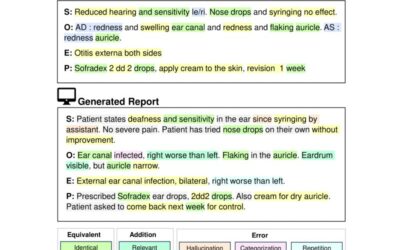This paper presents a qualitative design science study into the interface of an Automated Medical Reporting (AMR) system in order to establish user-centered design principles. AMR has been proposed as a solution to conquer the administrative burden in healthcare to improve patient-doctor contact. In order to expand this vision by including interface design principles without overlooking the usability aspects, a case study was performed within the preoperative screening department of an academic hospital. In this research, the current screening procedures were investigated by a task analysis, a heuristic evaluation of the current Electronic Health Record system, and stakeholder interviews. The preoperative screenings analysis and the findings of the interviews were translated into design choices. Based on these design choices and IT expert feedback, a treatment design in the form of a high-fidelity prototype of an AMR system for preoperative screenings was developed. This treatment was evaluated by conducting think-aloud sessions and a focus group. Based on the evaluations, ten elementary design principles were formulated for the AMR system interface, which have been categorized into four themes: (1) system status visibility, (2) care provider control, (3) consultation traceability, and (4) patient privacy. We also experienced that medical specialists find it hard to envision the future of their workflow using an AMR system, and that many individual preferences exist.
DOWNLOAD THE PUBLICATION HERE IN PDF:
![]()




